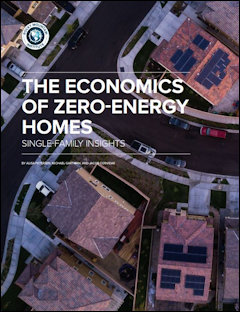The 2018 Grid Transformation and Security Act requires Dominion Energy Virginia to propose at least $870 million in energy-efficiency investments over the next ten years. Yesterday Dominion submitted the first wave of proposals, eleven projects totaling $280 million.
The company estimates that it would spend $215 million on new initiatives and $46.7 million on reconstituting existing programs, reports the Richmond Times-Dispatch. The proposals must be approved by the State Corporation Commission, which in the past has applied a skeptical eye toward energy-efficiency and conservation programs. Under the 2018 legislation, however, the General Assembly declared energy-efficiency to be in the public interest, presumably lowering the bar for approval.
The proposed programs include:
Residential:
1. Recycling older fridges and freezers
2. Gaining insights into energy usage to make suggestions on how to save
3. Rebates on purchases of specific energy-efficient appliances
4. Installation of energy-saving measures following a home-energy assessment
5. Management of heat pumps and air-conditioning units using smart thermostats to reduce peak demand
6. Rebates on qualifying smart thermostats coupled with energy saving recommendations
Non-residential:
1. Implementation of more efficient lighting
2. Upgrades to or implementation of more efficient HVAC technology
3. Installation of solar reduction window film
4. Energy efficiency improvements to small manufacturing facilities
5. Energy-efficiency improvements at smaller offices
In the past, the SCC has balked on energy-efficiency proposals for at least two reasons. First, proposed programs offered a poor return on financial investment — they cost more to implement than they provided in savings to rate payers. Second, some programs benefited narrow groups while loading the cost on rate payers generally. It’s not clear yet how the three SCC judges will reconcile their previous logic with the General Assembly’s declaration that energy efficiency and conservation are in the public interest.
A third question, which I have yet to see raised, is whether electric utilities are the logical entities to implement energy-efficiency measures. The free-market environmentalist Rocky Mountain Institute (RMI) has just released an analysis concluding that zero-energy homes — homes that literally produce as much energy as they consume over the course of a year — are reaching cost parity with normal homes in many parts of the country.
While there is no one-size-fits-all solution, RMI says, “In all climates, the cost optimal solution … included 100-percent LED lighting, low-flow water fixtures, and ENERGY STAR appliances, all of which reduce load at a very minimal cost premium. In addition, heat pumps were used for both space heating and water heating.”
This raises a fundamental question: Should Virginia spend arbitrarily determined amounts of money on utility investments or should it rely upon developers and home builders driven by market forces? Or a third option: Should Dominion and Appalachian Power tailor programs to incentivize home builders to install energy-efficiency measures, making the construction of energy-efficient new homes, which, if RMI is to be believed, a no-brainer?


Leave a Reply
You must be logged in to post a comment.